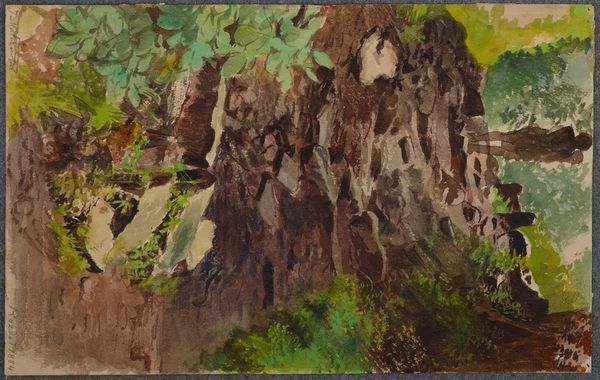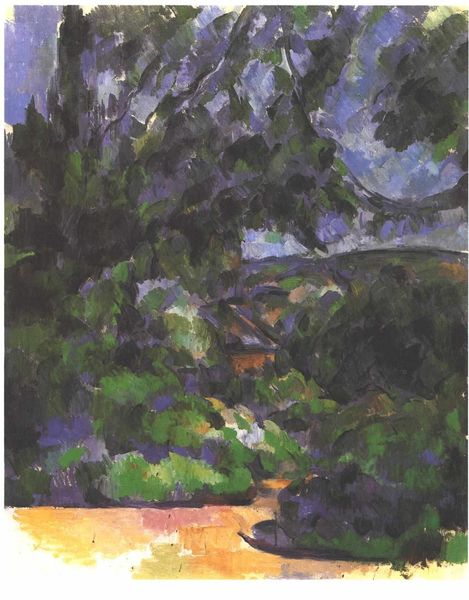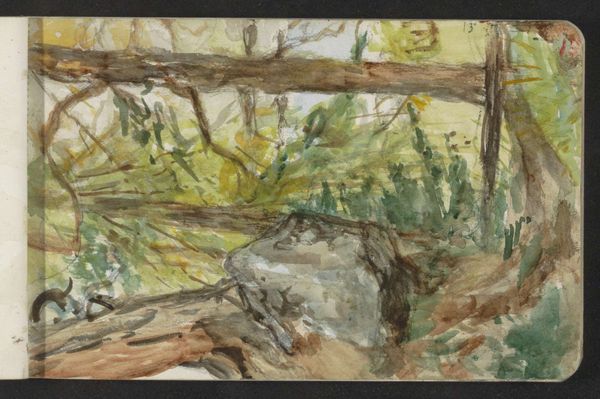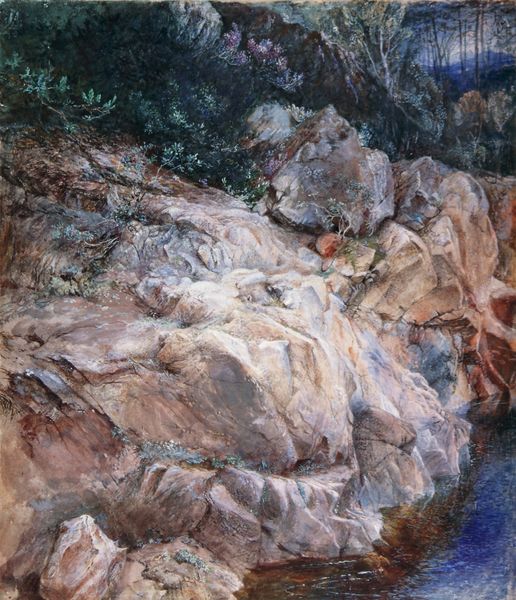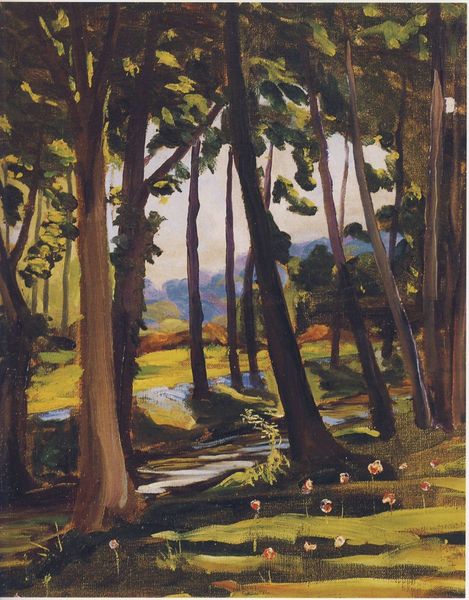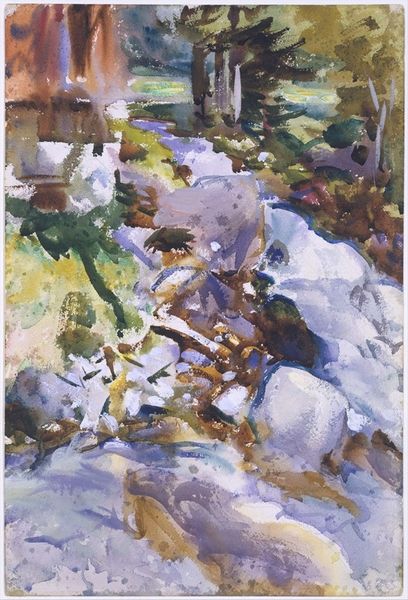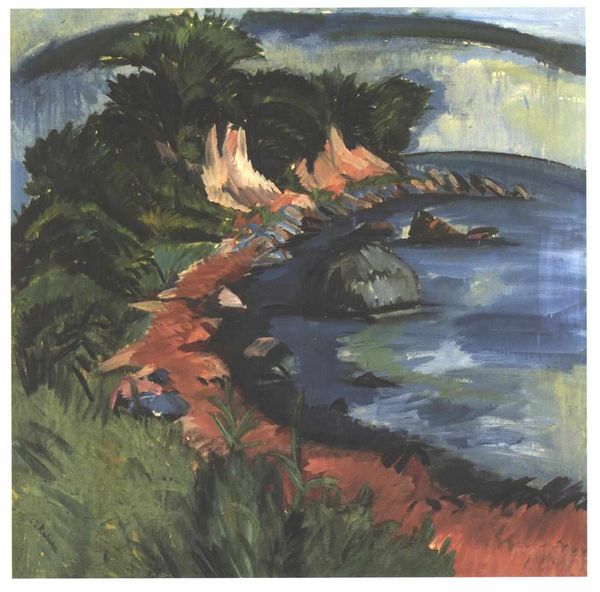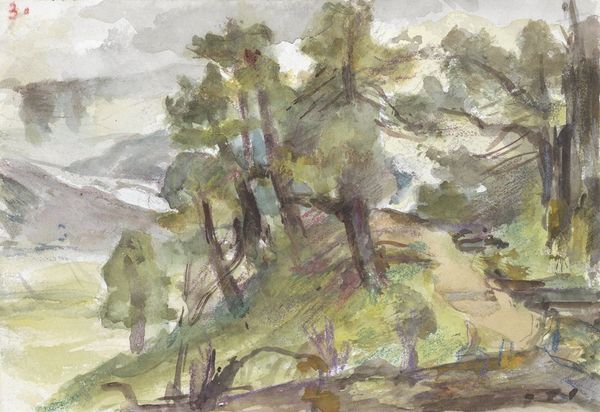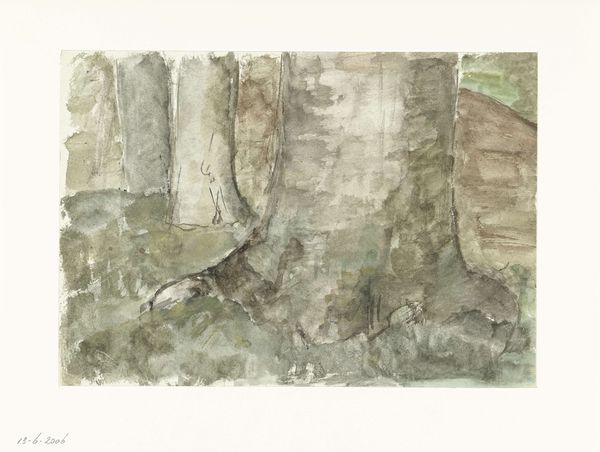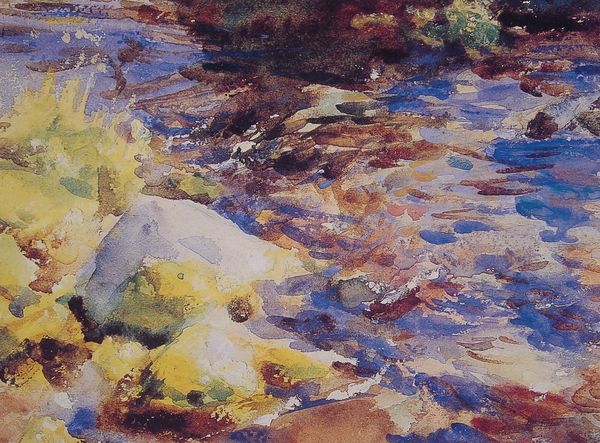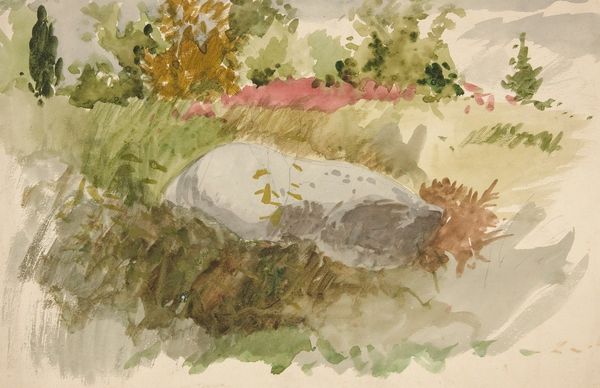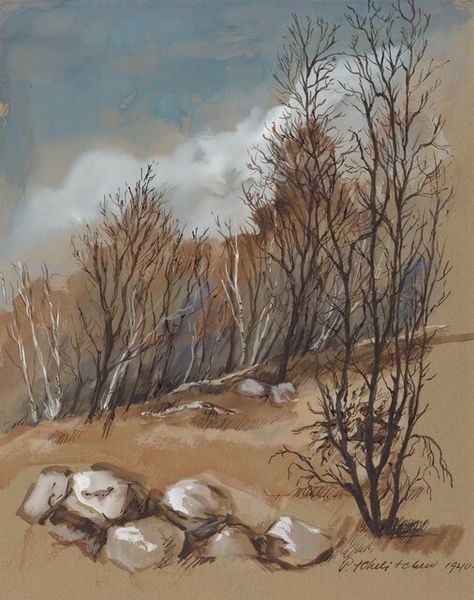
plein-air, watercolor
#
impressionism
#
plein-air
#
landscape
#
watercolor
Copyright: Public domain
Editor: We’re looking at Paul Cézanne’s "Rocks," painted around 1867, using watercolor. The colours feel surprisingly bold for watercolor, and the composition is unusual, almost cutting off the rock formations. What's your take on this seemingly simple landscape? Curator: Cézanne's choice of subject matter, humble rocks, reveals much about the evolving role of landscape painting in 19th-century France. Landscapes transitioned from idealized scenes towards a more direct engagement with nature, reflecting democratic ideals where the everyday experience was deemed worthy of artistic representation. Have you considered how his style defied academic landscape conventions? Editor: Not really, I guess it felt natural to see it without any history. The cropping definitely gives it a modern feel. Curator: Exactly! Think about the established Salon system at the time. Paintings like this, focused on the unglamorous, actively challenged what was deemed 'exhibitable.' The "plein-air" technique was itself a move away from the controlled studio and toward societal change and realism. Does knowing this change how you perceive the painting? Editor: It does make me wonder what the establishment thought. The lack of polish maybe felt radical at the time. Curator: It absolutely was. What else strikes you now, considering this pushback? Editor: It feels like a political statement. He wasn’t just painting rocks; he was challenging artistic norms and, in a way, social hierarchies by depicting ordinary subjects. I'll remember to think more about context and cultural background when looking at art! Curator: Precisely. Examining art through this lens allows us to see it not just as aesthetically pleasing but also as active agents in shaping cultural values. This piece provides a fresh view into 19th century society!
Comments
No comments
Be the first to comment and join the conversation on the ultimate creative platform.
